Top News
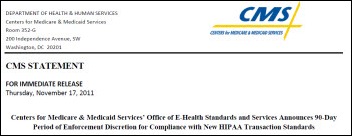
 CMS announces a 90-day period of “enforcement discretion for compliance” for the HIPAA 5010 transaction set, meaning CMS will not enforce compliance until March 31, 2012. The announcement follows mounting pressure to delay enforcement since many payers, providers, and vendors are reporting they are behind in their internal and external testing. And the rejoicing commences among procrastinators and those dependent on procrastinators.
CMS announces a 90-day period of “enforcement discretion for compliance” for the HIPAA 5010 transaction set, meaning CMS will not enforce compliance until March 31, 2012. The announcement follows mounting pressure to delay enforcement since many payers, providers, and vendors are reporting they are behind in their internal and external testing. And the rejoicing commences among procrastinators and those dependent on procrastinators.
Reader Comments
 From Kaiser-ite: “Re: fixing MU payment mishap. After doing some digging, I have a contact for someone that should be able to correct the issue with the doctor who was not paid her Meaningful Use incentive because it was incorrectly paid to Kaiser. From what I could tell, Kaiser’s Meaningful Use payments are sought through a combination of different entities, but there is an overall PMO for getting it done. Being a Kaiser-ite, I hate to see the opacity of the org frustrate people.” I have connected Kaiser-ite with Unibroue, who originally sent us the note on behalf of his frustrated client. I’m thankful we have so many great readers that are eager to lend a hand when possible. We hope to hear a happy ending to this mess.
From Kaiser-ite: “Re: fixing MU payment mishap. After doing some digging, I have a contact for someone that should be able to correct the issue with the doctor who was not paid her Meaningful Use incentive because it was incorrectly paid to Kaiser. From what I could tell, Kaiser’s Meaningful Use payments are sought through a combination of different entities, but there is an overall PMO for getting it done. Being a Kaiser-ite, I hate to see the opacity of the org frustrate people.” I have connected Kaiser-ite with Unibroue, who originally sent us the note on behalf of his frustrated client. I’m thankful we have so many great readers that are eager to lend a hand when possible. We hope to hear a happy ending to this mess.

 From Beantower: “Re: giant shoe sculpture at Cosmo. This made me think of you. Possible venue for the HISsies.” OMG that is beautiful! If our sponsors hadn’t already secured another Vegas venue, I would be lobbying hard for the Cosmo. Actually, I might be too easily outed if HIStalkapalooza were somewhere close to this shoe as I would be the one trying to crawl into the sculpture with my Inga-tini in hand.
From Beantower: “Re: giant shoe sculpture at Cosmo. This made me think of you. Possible venue for the HISsies.” OMG that is beautiful! If our sponsors hadn’t already secured another Vegas venue, I would be lobbying hard for the Cosmo. Actually, I might be too easily outed if HIStalkapalooza were somewhere close to this shoe as I would be the one trying to crawl into the sculpture with my Inga-tini in hand.
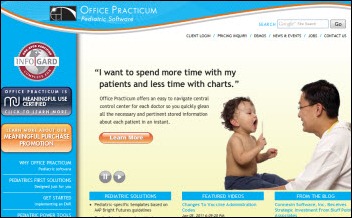
 From Little Honey Bee: “Re: Connexin Software. Connexin receives a multi-million dollar investment from Bluff Point Associates. Note the plan for ‘broader clientele’, which is code for ‘no longer focusing on pediatricians’ because there’s no VC company in the world who’d focus on the lowest paid of the specialties.” Connexin offers Office Practicum EHR/PM, which has traditionally been marketed exclusively to pediatricians. The press release makes numerous references to pediatrics, so at a minimum Connexin trying to ease potential concerns from customers that the company’s commitment to pediatrics will be lost in the “next stage of growth.”
From Little Honey Bee: “Re: Connexin Software. Connexin receives a multi-million dollar investment from Bluff Point Associates. Note the plan for ‘broader clientele’, which is code for ‘no longer focusing on pediatricians’ because there’s no VC company in the world who’d focus on the lowest paid of the specialties.” Connexin offers Office Practicum EHR/PM, which has traditionally been marketed exclusively to pediatricians. The press release makes numerous references to pediatrics, so at a minimum Connexin trying to ease potential concerns from customers that the company’s commitment to pediatrics will be lost in the “next stage of growth.”
 From TH: “Re: 5010 enforcement delay. The questions have started pouring in to vendors, payers, and providers on implications.” It seems the government never sticks to a firm date when HIT is involved, which given some of what the government requires is like a death row inmate hearing that the electric chair is broken, but the repair person has been called. I don’t know that a three-month option enforcement period really changes anything, other than to give laggards hope that 5010 will just go away if they ignore it long enough.
From TH: “Re: 5010 enforcement delay. The questions have started pouring in to vendors, payers, and providers on implications.” It seems the government never sticks to a firm date when HIT is involved, which given some of what the government requires is like a death row inmate hearing that the electric chair is broken, but the repair person has been called. I don’t know that a three-month option enforcement period really changes anything, other than to give laggards hope that 5010 will just go away if they ignore it long enough.
 From TheBus: “Re: Epic’s reputation. I attended a Minneapolis Collaborative meeting this morning, which focuses on innovation and startups. This one was focused on healthcare innovation, with a great lineup of startup and CEO panelists. Epic was cited specifically by two separate panels as a barrier to progress. Startups and legitimately funded innovators are chomping at the bit to share healthcare data and make it more actionable and Epic’s unwillingness to share and cooperate is a major issue. This group of driven CEOs will move on without Epic if they need to. Epic needs to decide if it’s an innovator or a cash cow. It’s beginning to act like the latter, which is good for its owners, but bad for everyone else.” Just to play devil’s advocate, few companies go out of their way to help their competitors. It’s kind of their job to earn the business on their own. But if we’re talking “healthcare is different than other businesses” even though it really isn’t no matter how often we keep saying it, then it would be nice if Epic played well with others, although as Steve Jobs urged, “Control the user experience.”
From TheBus: “Re: Epic’s reputation. I attended a Minneapolis Collaborative meeting this morning, which focuses on innovation and startups. This one was focused on healthcare innovation, with a great lineup of startup and CEO panelists. Epic was cited specifically by two separate panels as a barrier to progress. Startups and legitimately funded innovators are chomping at the bit to share healthcare data and make it more actionable and Epic’s unwillingness to share and cooperate is a major issue. This group of driven CEOs will move on without Epic if they need to. Epic needs to decide if it’s an innovator or a cash cow. It’s beginning to act like the latter, which is good for its owners, but bad for everyone else.” Just to play devil’s advocate, few companies go out of their way to help their competitors. It’s kind of their job to earn the business on their own. But if we’re talking “healthcare is different than other businesses” even though it really isn’t no matter how often we keep saying it, then it would be nice if Epic played well with others, although as Steve Jobs urged, “Control the user experience.”

 From CDSMavin: “Re: UpToDate. A study found that use of UpToDate’s clinical decision support shows shorter length of stays, lower risk-adjusted mortality rates, and better quality performance.” I don’t find the Journal of Hospital Medicine article impressive. The quality differences were almost imperceptible (LOS 5.6 days vs. 5.7 days, for example) and it was another of those public health-type studies that just matched up a bunch of readily available databases (the UpToDate customer list being one) and looked for differences between customers and non-customers without any attempt to distinguish between cause vs. effect. Were those tiny differences in the cherry-picked numbers due to using UpToDate, or rather due to the differences in characteristics of which hospitals buy UpToDate and which ones don’t? (like if your hospital is hemorrhaging cash and can’t afford to buy medical databases, you’re probably falling short in clinical areas as well.) They didn’t even ask how hospitals were using UpToDate, so if you believe the authors’ conclusions, all you need to do is buy the product and put it on the shelf. The authors had the data right in front of them that would have provided a more conclusive answer to their vague assertion that UpToDate improves outcomes: show us the mortality rates of individual hospitals before and after they signed up. UpToDate is an excellent product (full disclosure – Wolters Kluwer Health is a sponsor, but I was using UpToDate way before then), but as a vendor of critically evaluated, soundly researched medical evidence, I wouldn’t promote this article too hard if I were them.
From CDSMavin: “Re: UpToDate. A study found that use of UpToDate’s clinical decision support shows shorter length of stays, lower risk-adjusted mortality rates, and better quality performance.” I don’t find the Journal of Hospital Medicine article impressive. The quality differences were almost imperceptible (LOS 5.6 days vs. 5.7 days, for example) and it was another of those public health-type studies that just matched up a bunch of readily available databases (the UpToDate customer list being one) and looked for differences between customers and non-customers without any attempt to distinguish between cause vs. effect. Were those tiny differences in the cherry-picked numbers due to using UpToDate, or rather due to the differences in characteristics of which hospitals buy UpToDate and which ones don’t? (like if your hospital is hemorrhaging cash and can’t afford to buy medical databases, you’re probably falling short in clinical areas as well.) They didn’t even ask how hospitals were using UpToDate, so if you believe the authors’ conclusions, all you need to do is buy the product and put it on the shelf. The authors had the data right in front of them that would have provided a more conclusive answer to their vague assertion that UpToDate improves outcomes: show us the mortality rates of individual hospitals before and after they signed up. UpToDate is an excellent product (full disclosure – Wolters Kluwer Health is a sponsor, but I was using UpToDate way before then), but as a vendor of critically evaluated, soundly researched medical evidence, I wouldn’t promote this article too hard if I were them.
HIStalk Announcements and Requests

 This week on HIStalk Practice: the Wichita City Council entices Pulse Systems to stay local. Medley Health secures $20 million in Series A financing. gloStream expands it partners program. AAFP’s president encourages members to achieve PCMH recognition. Practice Wise’s Julie McGovern reflects on the similarities between HIT and medicine. In you are curious about the above photo, details here. Stay in the ambulatory HIT loop by signing up for email updates and checking out our sponsors’ offerings. And thanks reading.
This week on HIStalk Practice: the Wichita City Council entices Pulse Systems to stay local. Medley Health secures $20 million in Series A financing. gloStream expands it partners program. AAFP’s president encourages members to achieve PCMH recognition. Practice Wise’s Julie McGovern reflects on the similarities between HIT and medicine. In you are curious about the above photo, details here. Stay in the ambulatory HIT loop by signing up for email updates and checking out our sponsors’ offerings. And thanks reading.
 Listening: reader-recommended Kevin Salem, a reclusive, commercially indifferent but very talented roots rocker (Tom Petty meets The Replacements) whose modest peak of reluctant fame came in the mid-‘90s. He’s a smart writer on his site, with this fun snip: “In this way, becoming a parent is a lot, I imagine, like being Newt Gingrich: you wake up one day fat and changing your position on virtually everything, blaming your transgressions on the overflow of devotion (in his case, to country, in ours, to our progeny).”
Listening: reader-recommended Kevin Salem, a reclusive, commercially indifferent but very talented roots rocker (Tom Petty meets The Replacements) whose modest peak of reluctant fame came in the mid-‘90s. He’s a smart writer on his site, with this fun snip: “In this way, becoming a parent is a lot, I imagine, like being Newt Gingrich: you wake up one day fat and changing your position on virtually everything, blaming your transgressions on the overflow of devotion (in his case, to country, in ours, to our progeny).”
 Go ahead, make Inga’s day: (a) sign up for e-mail updates; (b) electronically canoodle with us via Facebook and LinkedIn; c) send news and rumors by clicking the puzzlingly green Rumor Report box to your right; (d) thank a sponsor since CEOs just gush when a reader tells them their sponsorship is appreciated; and (e) behold in the mirror the face of a rebel, a thinker, a self-directed universe-denter who isn’t afraid to get news from a thoroughly unprofessional site of uncertain provenance, for which I am eternally grateful since it would be lonely here otherwise.
Go ahead, make Inga’s day: (a) sign up for e-mail updates; (b) electronically canoodle with us via Facebook and LinkedIn; c) send news and rumors by clicking the puzzlingly green Rumor Report box to your right; (d) thank a sponsor since CEOs just gush when a reader tells them their sponsorship is appreciated; and (e) behold in the mirror the face of a rebel, a thinker, a self-directed universe-denter who isn’t afraid to get news from a thoroughly unprofessional site of uncertain provenance, for which I am eternally grateful since it would be lonely here otherwise.
 My latest pet peeve: desperate pseudo-news sites that insist on running dumb slide shows or photo galleries, forcing you to click endlessly through unrelated pictures one at a time just to see the crappy list they’ve hastily assembled with dumbed-down headlines that would have easily fit onto a single page, like”12 Great Places to Raise Kids” or “25 Gourmet Ramen Noodle Ideas.” You know, of course, why they do that: every one of your time-wasting clicks counts as a page view, eliciting gooseflesh on the part of Internet-savvy but marketing-stupid advertisers who don’t catch the fact that such mindless clicking, no matter how many impressive statistics it generates, provides them with no benefit whatsoever.
My latest pet peeve: desperate pseudo-news sites that insist on running dumb slide shows or photo galleries, forcing you to click endlessly through unrelated pictures one at a time just to see the crappy list they’ve hastily assembled with dumbed-down headlines that would have easily fit onto a single page, like”12 Great Places to Raise Kids” or “25 Gourmet Ramen Noodle Ideas.” You know, of course, why they do that: every one of your time-wasting clicks counts as a page view, eliciting gooseflesh on the part of Internet-savvy but marketing-stupid advertisers who don’t catch the fact that such mindless clicking, no matter how many impressive statistics it generates, provides them with no benefit whatsoever.
 On the Jobs Board: Clinical Applications Analysts, Director Client Programs – HIE Architect, Senior Implementation Project Manager. On Healthcare IT Jobs: SQL/EHR Programmer, Manager IS Enterprise Systems, Epic Revenue Cycle.
On the Jobs Board: Clinical Applications Analysts, Director Client Programs – HIE Architect, Senior Implementation Project Manager. On Healthcare IT Jobs: SQL/EHR Programmer, Manager IS Enterprise Systems, Epic Revenue Cycle.
Acquisitions, Funding, Business, and Stock
Safeguard Scientifics leads a $7 million Series A financing for Medivo, an HIT company providing data analytics and lab testing services. Safeguard also recently added billing system software provider AdvantEdge Healthcare Solutions to its portfolio.
The stocks of nursing home operators and their landlords have fallen sharply since July, when the government announced a 11.1% cut in Medicare reimbursements. Landlords are concerned that some nursing homes won’t have enough money to pay their rent. Industry analysts believe investors may be over-reacting since many nursing homes have ample cash to manage operations for at least another 12-18 months, and most landlords set rents low enough so that operators have cash available in the event of earnings shortfalls.
Perceptive Software releases its ModusOne document output management solution for GA.

AirStrip presented at the mHealth Conference in Paris this week as the company prepares for an international launch, with GE Healthcare as its global distribution partner.

 GE announces that it will open a global software center in San Ramon, CA, hoping to speed innovation and commercialization of software technologies in its many business lines and to lead its 5,000 software professionals. The announcement mentions intelligent systems that operate on the “industrial Internet.” Healthcare gets the only customer quote, with Mount Sinai Hospital President and COO Wayne Keathley talking up GE’s tools to manage patient flow and costs. The gratuitous photo accompanying the press release didn’t do the company any favors other than to boost CT scanner usage as readers suddenly come down with unexplained headaches.
GE announces that it will open a global software center in San Ramon, CA, hoping to speed innovation and commercialization of software technologies in its many business lines and to lead its 5,000 software professionals. The announcement mentions intelligent systems that operate on the “industrial Internet.” Healthcare gets the only customer quote, with Mount Sinai Hospital President and COO Wayne Keathley talking up GE’s tools to manage patient flow and costs. The gratuitous photo accompanying the press release didn’t do the company any favors other than to boost CT scanner usage as readers suddenly come down with unexplained headaches.

New Mexico Software changes its name to Net Medical Xpress Solutions. It offers PACS, a radiology reading service, and a newly announced telemedicine service.
Sales

HANYS Solutions, a subsidiary of the Healthcare Association of New York State, expands its agreement with QuadraMed to include identity management solutions.
Northern Ireland Health and Social Care selects Mediware’s JAC Computer Services Limited technology for enterprise medication management.
San Diego Beacon Community (CA) selects OptumInsight to build its health information exchange.

Huntington Hospital (CA) engages MedAssets for revenue cycle solutions that include tools for charge master management, charge capture auditing, and cost management of drugs and supplies.
People
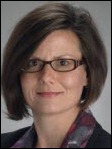
The Patient-Centered Primary Care Collaborative announces that Marcia Nielsen, PhD, MPH, will take over as executive director as of January 2, 2012. She is associate dean for health policy at the University of Kansas Medical Center.
Revenue cycle and PM vendor MedSynergies names Vicki Laurie as CIO. She was previously with Anthelio.
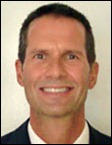
 Healthcare Quality Catalyst brings on HIT long-timers Dale Sanders (above) as SVP and Larry Grandia as a board member. Dale was CIO of the Cayman Islands health system and at Northwestern University Medical Center before that. Larry was CTO of Premier, but those who’ve been around awhile remember him from DAOU Systems and Intermountain Healthcare (Vince mentioned him in his HIS-tory recently, in fact.) HQC sells clinical improvement data warehouse solutions; I interviewed co-founder Steve Barlow in August.
Healthcare Quality Catalyst brings on HIT long-timers Dale Sanders (above) as SVP and Larry Grandia as a board member. Dale was CIO of the Cayman Islands health system and at Northwestern University Medical Center before that. Larry was CTO of Premier, but those who’ve been around awhile remember him from DAOU Systems and Intermountain Healthcare (Vince mentioned him in his HIS-tory recently, in fact.) HQC sells clinical improvement data warehouse solutions; I interviewed co-founder Steve Barlow in August.

Frank Maddux is named chief medical officer of renal therapy provider Fresenius Medical Care North America. Health IT Services Group, the EMR company he founded, was acquired by Fresenius in 2009. It sells the Acumen nEHR nephrology EMR.

 Mary Alice Annecharico, formerly SVP/CIO at University Hospitals (OH), is named SVP/CIO of Henry Ford Health System (MI) in an HFHS internal e-mail forwarded by a reader. The announcement mentions HFHS’s “clinical transformation with Epic,” the impending $350 million project to replace its just-implemented $100 million system.
Mary Alice Annecharico, formerly SVP/CIO at University Hospitals (OH), is named SVP/CIO of Henry Ford Health System (MI) in an HFHS internal e-mail forwarded by a reader. The announcement mentions HFHS’s “clinical transformation with Epic,” the impending $350 million project to replace its just-implemented $100 million system.
Announcements and Implementations

 The 25-bed Grande Ronde Hospital (OR) enters its initial stages of EHR implementation. The hospital’s IT manager tells the local press that “the electronic health record system doesn’t necessarily save time because physicians will have a lot more data to type into the system, but it’s more efficient and the government is requiring more information on costs and quality.” The article also notes that the EHR could provide other benefits “if the system works.”
The 25-bed Grande Ronde Hospital (OR) enters its initial stages of EHR implementation. The hospital’s IT manager tells the local press that “the electronic health record system doesn’t necessarily save time because physicians will have a lot more data to type into the system, but it’s more efficient and the government is requiring more information on costs and quality.” The article also notes that the EHR could provide other benefits “if the system works.”
CureMD Healthcare launches its HIE connectivity with HCA.

Northern Michigan Regional Hospital goes live on CPOE with Cerner PowerChart.
Massachusetts General Hospital goes live on the Sunquest CoPathPlus 5.0 anatomic pathology solution.
SCI Solutions announces that it signed 53 new clients in FY11, raising its total to more than 450 hospitals.
Sectra’s newly announced RIS v 7.0 includes enhancements to allow radiologists to meet Meaningful Use objectives, including a referring physician portal, a patient portal, and lab test tracking.
Government and Politics

CMS releases the 2012 application for its Medicare Shared Savings Program. ACOs have the option of starting April 1 (applications accepted December 1-January 20) or July 1 (applications March 1-30.)
Technology
Home care software provider Procura launches Procura Mobile for Android, adding that option to its existing BlackBerry client.

Business analytics company Pentaho announces native HL7 support with Pentaho Business Analytics.
Other

HIMSS releases its full agenda for the HIMSS12 educational program, which includes over 300 sessions.
CHIME and eHealth Initiative release an HIE guide for CIOs.

AHIMA expresses disappointment with the AMA’s opposition to the ICD-10 implementation schedule, noting that ICD-10 offers “countless benefits.” AHIMA says it has demonstrated that administrative systems can be easily implemented for most primary care practices and that specialty practices will only be using a small number of codes.
Despite widespread success recruiting and enrolling providers, RECs have helped relatively few providers attest for Meaningful Use. Of the 90,000 providers enrolled nationwide, only 1,000 have attained Meaningful Use; the goal for RECs is for at least 20% success. Some RECs have faced challenges with staff recruiting and retention, while others complain of difficulties getting software upgrades from vendors on behalf of their clients.
A blogger visiting the Epic campus posts a great collection of photos from her tour of Intergalactic Headquarters. She captures everything from obscure works of art, architecture, and the assorted whatnots.
GetWellNetwork PatientLife System earns the top spot in KLAS’s just-released review of interactive patient systems, beating four competitors. The category covers hospital in-room systems that can provide patient education, on-demand video, patient surveys, entertainment, Internet access, patient requests, and nurse communication.
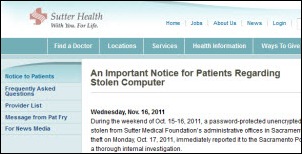
A laptop stolen last month from Sutter Medical Foundation contained personal information for 3.3 million Sutter Health patients, although that information was benign (patient names, contact information, medical record number, and insurance information.) The laptop wasn’t encrypted, although Sutter says its encryption project was underway and it will now accelerate that effort.
Health Outcomes Sciences posts a free trial of its ePRISM clinical risk modeling software, which provides patient-specific automated consents and outcomes forecasts for angioplasty.
 Verizon makes its Fraud Management for Healthcare software available to government and private health insurers. “Makes available” was not qualified with “for free,” so this is apparently a product announcement.
Verizon makes its Fraud Management for Healthcare software available to government and private health insurers. “Makes available” was not qualified with “for free,” so this is apparently a product announcement.
 This is a rare two-Newt mention edition: USA Today calls out Newt Gingrich for shilling healthcare vendors who pay fees to his big-money Center for Health Transformation without disclosing his vested interest. Example: he and Sen. John Kerry lauded his Center’s clients Allscripts and Misys in promoting electronic prescribing legislation that would benefit them back in 2008. I’ve ripped Newt’s center here for years because he passes it off as a noble think tank working for the betterment of society, when in fact its primary purpose is to line Newt’s pockets and keep him publicly visible. In fact, here’s what I said in 2008 when I was annoyed at another example of Newt’s shameless pitching:
This is a rare two-Newt mention edition: USA Today calls out Newt Gingrich for shilling healthcare vendors who pay fees to his big-money Center for Health Transformation without disclosing his vested interest. Example: he and Sen. John Kerry lauded his Center’s clients Allscripts and Misys in promoting electronic prescribing legislation that would benefit them back in 2008. I’ve ripped Newt’s center here for years because he passes it off as a noble think tank working for the betterment of society, when in fact its primary purpose is to line Newt’s pockets and keep him publicly visible. In fact, here’s what I said in 2008 when I was annoyed at another example of Newt’s shameless pitching:
Newt Gingrich pops up at Silver Cross Hospital (IL) to brag on Misys technology, of all things. Well, mostly about himself and his business, Center for Health Transformation, which the newspaper calls a "collaboration of public and private sector leaders." He’s our Jesse Jackson, sticking his head anywhere there’s a camera, somehow becoming wealthy without ever having had a real job, and working the system for personal benefit. I still kind of like him, but it’s trending down.
 This is one of the most egregious medication errors I’ve heard of: a hospital nurse intending to give Pepcid IV to a patient who is suffering from heartburn instead grabs pancuronium, the muscle blocker most often used for intubation (with respiratory support) and to kill prisoners (without respiratory support, basically smothering them). He dies; the family is suing. An investigation found that the nurse pulled the pancuronium from the secure area in which it was stored, didn’t read the label, skipped the bar code checking step, and then left the patient alone for 30 minutes afterward. She was fined $2,800, received a warning, and still works at the hospital.
This is one of the most egregious medication errors I’ve heard of: a hospital nurse intending to give Pepcid IV to a patient who is suffering from heartburn instead grabs pancuronium, the muscle blocker most often used for intubation (with respiratory support) and to kill prisoners (without respiratory support, basically smothering them). He dies; the family is suing. An investigation found that the nurse pulled the pancuronium from the secure area in which it was stored, didn’t read the label, skipped the bar code checking step, and then left the patient alone for 30 minutes afterward. She was fined $2,800, received a warning, and still works at the hospital.
 A man trying to commit suicide in a hospital’s ED parking lot by mixing deadly chemicals in his VW convertible changes his mind, strolling into the ED at 3 in the morning. The ED had to shut down for over four hours as the hazmat team cleaned up. The man is fine and may face charges.
A man trying to commit suicide in a hospital’s ED parking lot by mixing deadly chemicals in his VW convertible changes his mind, strolling into the ED at 3 in the morning. The ED had to shut down for over four hours as the hazmat team cleaned up. The man is fine and may face charges.
Sponsor Updates

- Shepherd Center (GA) implements RelayHealth’s MedGift patient gift registry and social media network.
- Buchanan County Health Center (TX) says its implementation of the Access Intelligent Forms Suite has streamlined the organization’s paper process and facilitated integration with its Meditech 6.0 system.
Billian’s HEALTHDATA releases its list of the 25 Best & Worst Rated US Hospitals, based on patient experiences at 3,002 hospitals.
- Concerro revamps its website and asks for feedback. Those sharing their opinion on Facebook, LinkedIn, or Twitter will be entered into a drawing for a $100 Amazon gift card.
- Practice Fusion reveals its iPad prototype and roadmap at last week’s Connect 2011 meeting.
- MED3OOO congratulates its client PED-I-CARE (FL) for winning the MGMA/ACMPE Fred Graham Award for Innovation in Improving Community Health.
- Healthcare Management Systems (HMS) announces that 17 additional client hospitals have successfully attested Stage 1 MU.
- Cynergisk Tek CEO Mac McMillan will discuss healthcare privacy and security issues at seven regional HIMSS conferences in Q4 2011.
- David Nace MD and Arien Malec of RelayHealth participated in ONC’s annual meeting this week in sessions related to IT requirements of Patient-Center Medical Homes and interoperability, respectively.
- Elsevier Clinical Decision Support collaborates with ExitCare to integrate ExitCare content into the Elsevier/Gold Standard and MDConsult products.
- NextGen names Port Gabmle S’Klallam Tribe (WA), Drs. Goodman & Partridge OB/Gyn (AZ), and Nautilus Healthcare Management Group (CA) as winners of its sixth annual Best Practice Awards for exemplary use of NextGen solutions.
EPtalk by Dr. Jayne
The Centers for Disease control recently released its final review of the Healthy People 2010 program. The results of its 10-year health goals aimed at improving the health of Americans are mixed. Although targets were met for 23% of the 733 objectives and progress was made in half of the remainder, there was no change for 5% of the objectives and 24% of them actually became worse. Obesity and health disparities targets were among those missed. Now that we have a baseline, I’ll be interested to see if Meaningful Use makes a difference on any of these metrics.
Surprise, surprise: a new study published in the Journal of the American Medical Association finds that physicians who own and bill for nuclear stress and stress echo testing are more than twice as likely to order those tests than physicians who don’t bill for those services.
News of the Weird: enterprising parents who want their children to be naturally infected with chickenpox are apparently using Facebook to arrange shipment of items contaminated by sick children. Pre-licked lollipops, blankets, and other disgusting items were reportedly being exchanged. In addition to being gross and disgusting, it’s also illegal.

Disco isn’t dead: researchers looking at effective technique for cardiopulmonary resuscitation (CPR) compared the chest compression technique of providers listening to either silence or the songs “Achy Breaky Heart” or “Disco Science.” Although the disco beat helped providers give compressions at a more ideal rate, it didn’t improve the depth of compressions.
The AMA announces a series of workshops to assist with the ICD-10 transition. Exciting locations include Baltimore, New Jersey, Dallas, Atlanta, and Las Vegas, all during the first part of December.
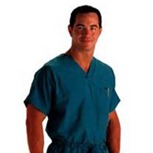
To Wear, or Not To Wear: hot on the heels of a UK ban on wearing white coats or long-sleeved uniforms in health care, a pair of articles show that maybe traditional garb isn’t as bad as was thought. A study performed in Jerusalem showed that upwards of 60% of physician and nurse uniforms harbored bacteria, some of the multidrug-resistant variety. Authors note, however, that “it remains to be determined whether these bacteria can be transferred to patients and cause clinically relevant infection.”
A separate study published earlier this year showed no significant difference in bacterial colonization rates between infrequently washed white coats and short-sleeved uniforms which were donned fresh each day. After eight hours of wear, the newly laundered uniforms were as contaminated as the white coats.
Frankly, I think some of the grossest places in the hospital are the computer workstations. I see very few keyboard covers that can be wiped down, and what’s even worse is the food crumbs in the keyboards, meaning someone is actually eating while using a dirty keyboard. Eww. That’s one more reason I carry my own personal tablet on rounds – I know when it’s been sanitized and I know for sure I don’t ever document without washing my hands first.
While researching this topic, I came across a related study which showed that “non-conventional” nurses’ attire (i.e. brightly colored clothing) helped lower children’s distrust of healthcare providers and reduce fear. Maybe Patch Adams was onto something after all. Interestingly, coloured uniforms (honouring the British spelling) also improved parental perception about the reliability of the nurse.
No surprise here: empathy can’t be taught. A study in the Archives of Surgery shows that surgical residents who attended communication training increased their communication scores, but not how much empathy they are perceived to have.
People notes: HIStalk Medicine Cabinet member Micky Tripathi was featured in a Medical Economics piece on Regional Extension Centers.
Have a question on billing practices, keyboard sanitizing, or choosing sassy scrubs? E-mail me.

Contacts
Mr. H, Inga, Dr. Jayne, Dr. Gregg.
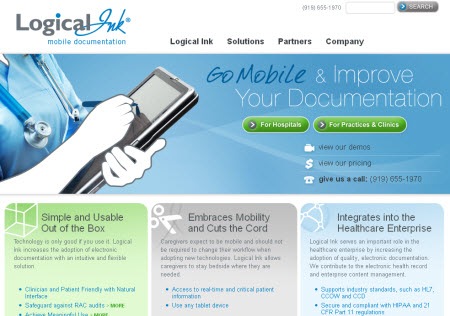






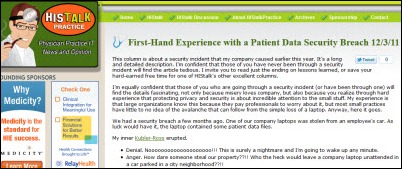

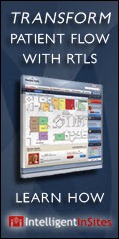


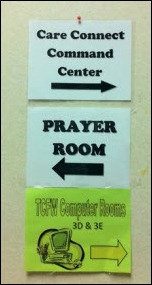
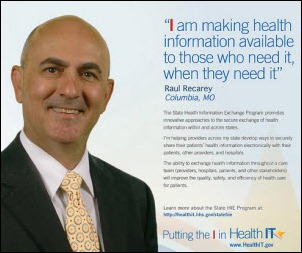
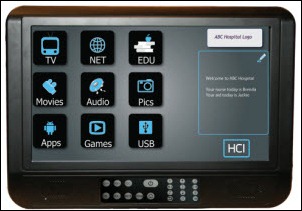


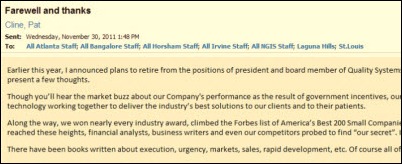
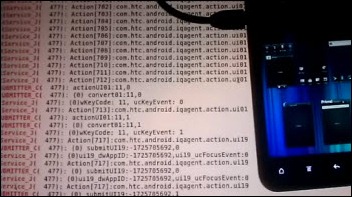

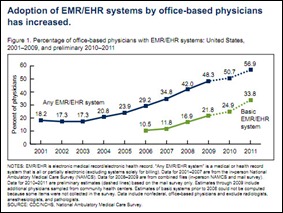
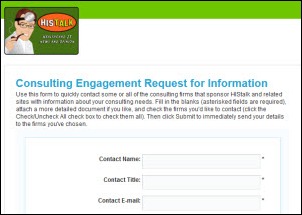

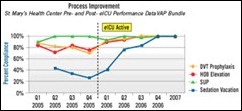


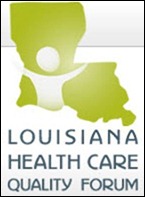





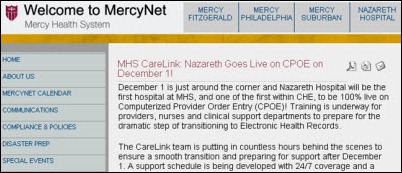

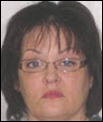

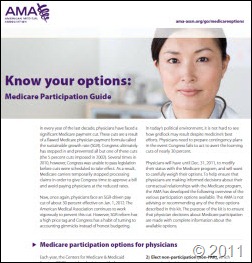


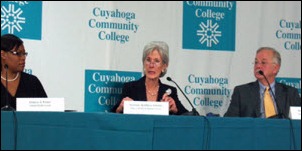
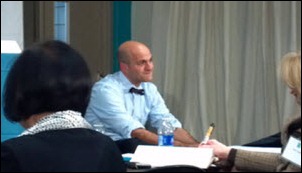

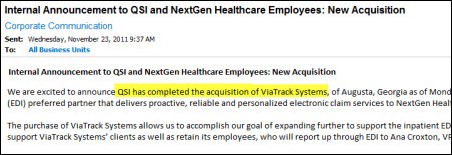
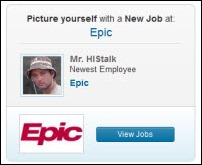
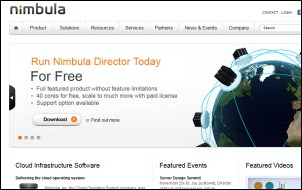

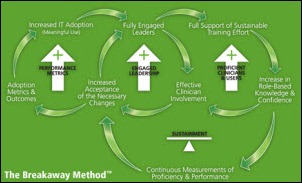


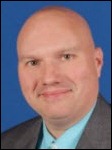

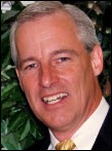
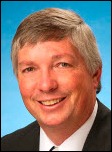
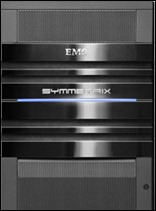
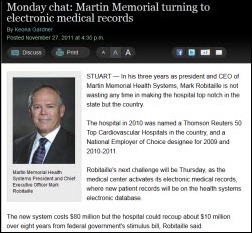
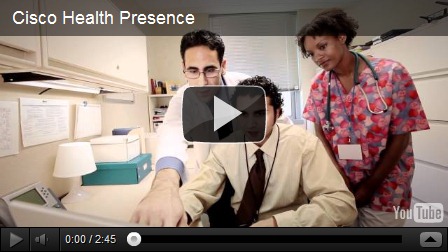
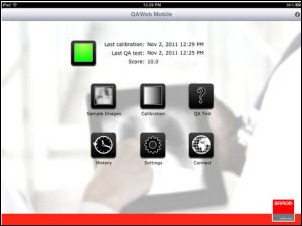
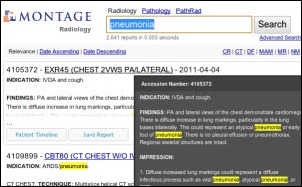


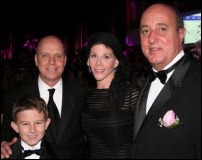



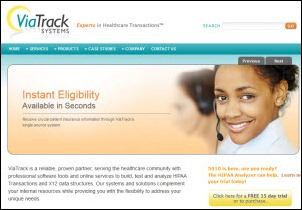
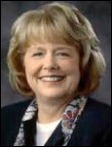
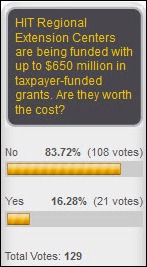

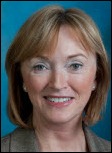
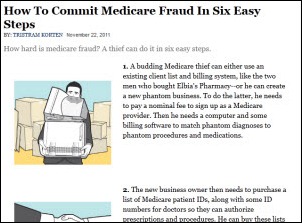
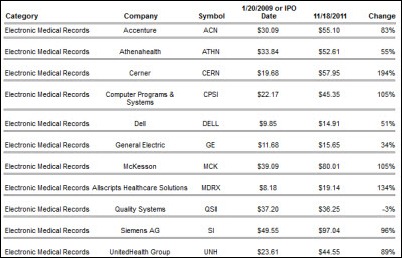
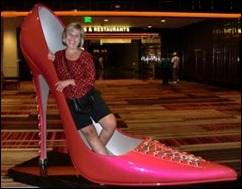
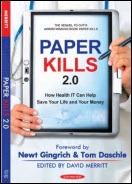
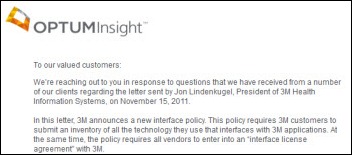
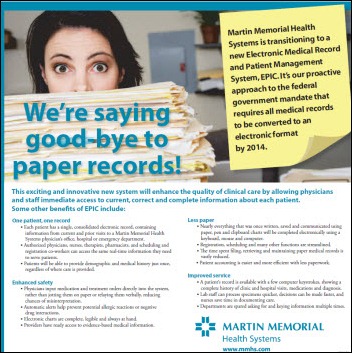
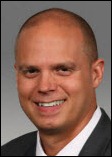


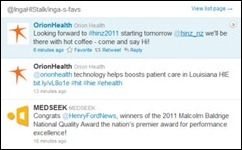

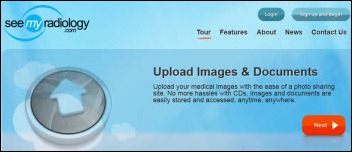

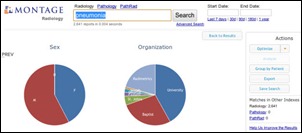


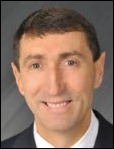



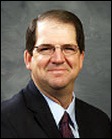
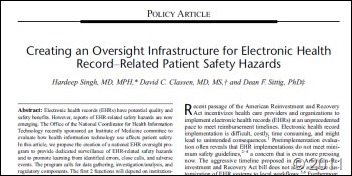

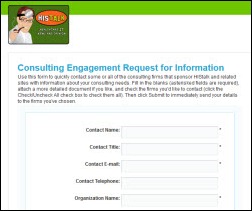

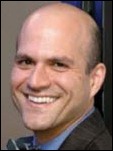
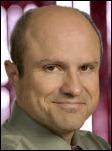































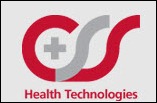
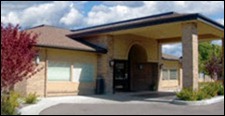

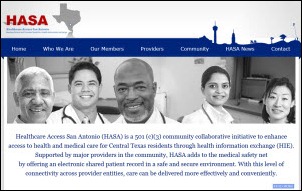
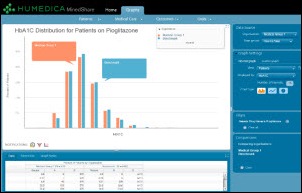

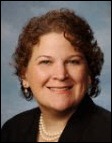
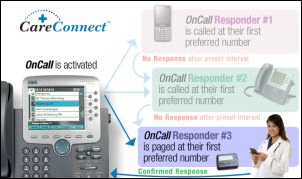
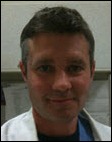
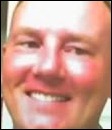

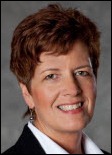


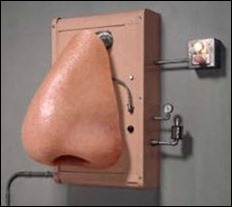

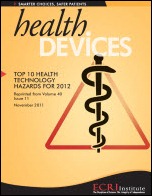

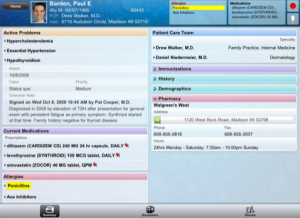


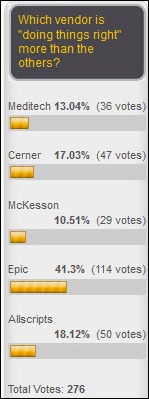




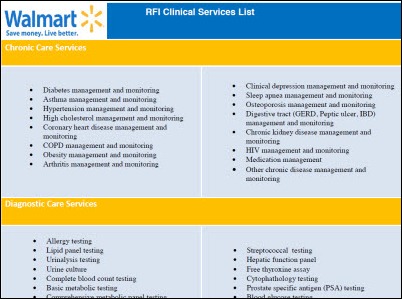


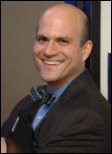








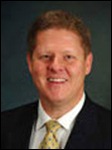
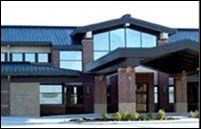


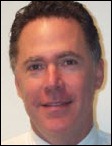
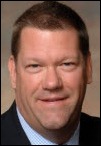
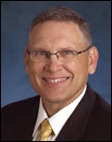




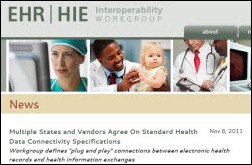







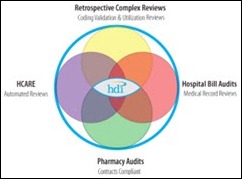
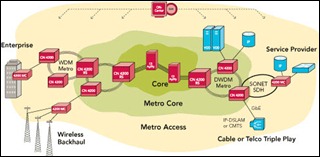



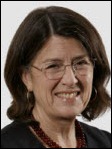



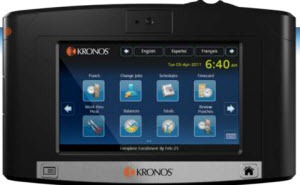
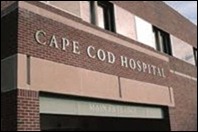

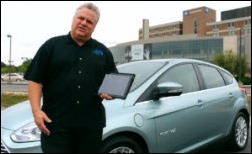


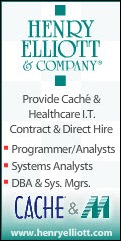

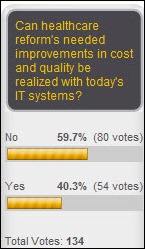
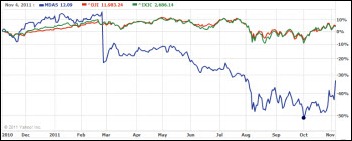






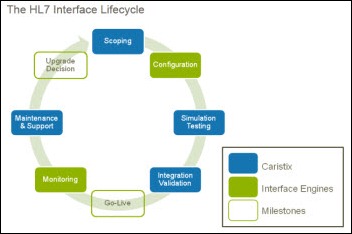

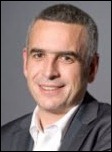
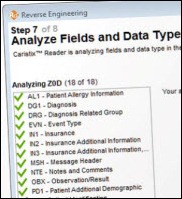
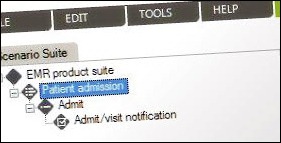





































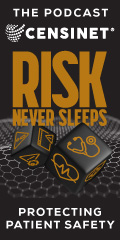













































Would have liked to have seen more about Expanse here. Would like to see more about it on this site…